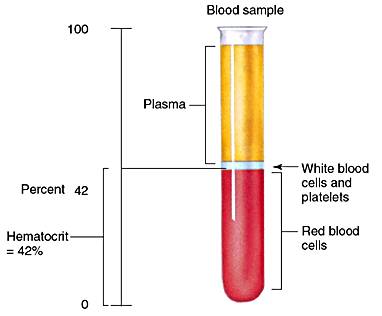Managing High Hematocrit Levels Induced by Testosterone Replacement Therapy

Introduction
Testosterone Replacement Therapy (TRT) is a commonly administered treatment for men grappling with hypogonadism or low testosterone levels. TRT has been shown to help ease the symptoms of low testosterone, but it also has a noticeable side effect: it raises hematocrit levels, which can cause a medical condition called erythrocytosis or polycythemia. Elevated hematocrit levels cause the blood to thicken, bringing about potential cardiovascular risks like strokes, heart attacks, and clotting events. This comprehensive guide seeks to elucidate various strategies to manage high hematocrit levels induced by TRT, fostering a well-rounded understanding for both patients and healthcare providers.
Table of Contents
- Introduction
- Understanding Hematocrit and Its Normal Ranges
- Factors Contributing to High Hematocrit Levels in TRT
- When to Act on Rising Hematocrit Levels
- Testosterone Treatment and Blood Cell Production
- Managing High Hematocrit Levels
- Comparative Effects of Different Testosterone Therapy Forms
- Therapeutic Phlebotomy
- Conclusion
- References
- Footnotes
Understanding Hematocrit and Its Normal Ranges
Hematocrit gauges the volume of red blood cells in the blood, expressed as a percentage, illustrating the proportion of blood comprised of red blood cells. Normal hematocrit levels for men range from 41% to 50%, and for women, they range from 36% to 48%.
Factors Contributing to High Hematocrit Levels in TRT
Testosterone Replacement Therapy can trigger erythrocytosis, where an overproduction of red blood cells occurs. It is known that testosterone lowers hepcidin levels. Hepcidin is a hormone that is made in the liver and is closely connected to iron absorption pathways. This lowers hepcidin levels leads to erythrocytosis and raises hemoglobin and hematocrit levels.
When to Act on Rising Hematocrit Levels
If you're using testosterone therapy (TT) and your hematocrit—the percentage of red blood cells in your blood—reaches 54% or more, experts from the European Association of Urology (EAU) and the American Urological Association (AUA) recommend taking action. The EAU advises checking for other possible causes that might be increasing your hematocrit, which could include factors mentioned in their risk section [8].
Testosterone Treatment and Blood Cell Production
Typically, the body produces more red blood cells in the first six months of testosterone treatment before this process levels off. If you stop TT, your hematocrit and hemoglobin (the protein in red blood cells that carries oxygen) usually return to normal within 3 to 12 months. Adjusting your TT dose or how it's administered might help prevent high red blood cell counts by mimicking the body's natural hormone levels more closely.
Managing High Hematocrit Levels
Monitoring
Regular monitoring of hemoglobin and hematocrit levels is pivotal for patients undergoing TRT. It is recommended to get baseline hematocrit values before starting treatment and then to do regular measurements at 3, 6, and 12 months after starting treatment.
Adjusting TRT Dosage
In instances where hematocrit levels soar beyond 54%, healthcare providers might consider decreasing the TRT dosage or temporarily halting the therapy until hematocrit levels normalize. Additionally, switching to subcutaneous injections could also be contemplated as a strategy to modulate hematocrit levels.
Lifestyle Modifications
Adopting certain lifestyle alterations can significantly impact hematocrit levels.
- Hydration: Ensuring ample fluid intake to maintain high blood volume.
- Exercise: Engaging in regular physical activity to reduce blood thickness.
- Smoking Cessation: Avoiding smoking can decrease hematocrit levels
Sleep Apnea Management
TRT has the potential to make sleep apnea, a condition marked by intermittent breathing interruptions while sleeping, worse. Continuous Positive Airway Pressure (CPAP) devices or other medically approved treatments that help people with sleep apnea can also help people with high hematocrit levels improve their health.
Medication and Supplements
Medications like Losartan and supplements like Naringin have shown promise in helping manage high hematocrit levels. However, it's crucial to consult with a healthcare provider before embarking on any new medication or supplement regimen.
Comparative Effects of Different Testosterone Therapy Forms
While all forms of testosterone therapy, such as gels, pills, patches, and injections, are linked to increased hematocrit levels, injectable forms were once thought to have the most significant impact. Recent studies have shown that although injections like testosterone enanthate can significantly raise hematocrit compared to patches, usually no form of therapy increases hematocrit by more than 4.3%. This suggests that careful patient selection and monitoring could mitigate the risk of excessive red blood cell production. The risk does not seem to correlate with the duration of testosterone therapy but is more pronounced during the initial phase due to the abrupt hormonal shift. Typically, hemoglobin and hematocrit levels rise within the first six months of therapy and tend to normalize within a year of discontinuation. However, dosage is a critical factor, and selecting an appropriate dose requires considering individual patient factors.
Therapeutic Phlebotomy
Therapeutic Phlebotomy (TP) is a widely adopted procedure to manage testosterone-induced polycythemia, involving the removal of a pint of blood to diminish hematocrit levels. The frequency of blood donations should not exceed once every 12 weeks to prevent iron loss due to frequent donations, contingent on individual responses to TRT.
Treating High Red Blood Cell Counts with Phlebotomy
Phlebotomy—the process of drawing blood—is a common treatment for polycythemia vera (PV) and high hematocrit caused by testosterone therapy, a condition with too many red blood cells, and there's no reason it can't be used for people with high red blood cell counts from TT [13]. A study by Marchioli and colleagues found that keeping hematocrit levels below 45% significantly reduced blood clots and other serious issues compared to allowing levels to be between 45 and 50%. While phlebotomy has been helpful in PV, its effectiveness for TT-related high red blood cell counts needs more high-quality research.
An observational study by Hazegh et al. showed that men on testosterone who donated blood saw their average hemoglobin levels decrease over a year. The frequency of their donations varied widely, indicating that blood donation could be a useful strategy.
There are No Set Guidelines for Plebotomy in Testosterone Therapy Yet
Currently, there are no specific guidelines on how often or how much blood should be drawn if you're on TT and experiencing high red blood cell counts.
Phlebotomy: A Temporary Solution?
While phlebotomy can lower hematocrit levels, it may not be a permanent fix. Chin-Yee et al. evaluated patients who donated blood and found that many had high hematocrit levels even after donating. This suggests that while phlebotomy can help, it might not completely control red blood cell counts related to TT.
In summary, phlebotomy can safely reduce hematocrit levels temporarily, but it should be used alongside other methods, like adjusting TT doses, to manage red blood cell counts effectively. More research is needed to define the role of phlebotomy in managing TT-related high red blood cell counts.
Conclusion
The meticulous management of high hematocrit levels in patients on TRT is pivotal to averting potential cardiovascular risks. A multifaceted approach can be used to effectively manage hematocrit levels. This includes monitoring, changing TRT dosages, making changes to the patient's lifestyle, managing sleep apnea, therapeutic phlebotomy, and medication or supplementation. It's incumbent upon healthcare providers and patients to collaborate and ascertain the most conducive management strategy, ensuring the efficacy of TRT while safeguarding the patient's health.
References
Footnotes
-
Excel Male TRT Forum. (n.d.). How to Manage High Hematocrit Caused by Testosterone Replacement Therapy. Retrieved from Excel Male TRT Forum ↩ ↩2
-
Discounted Labs. (n.d.). High Hematocrit Caused by TRT: How to Lower and Manage it. Retrieved from Discounted Labs ↩ ↩2 ↩3
-
PubMed Central (PMC). (n.d.). Testosterone use causing erythrocytosis. Retrieved from PMC ↩
-
PubMed. (n.d.). Management of Erythrocytosis in Men Receiving Testosterone Therapy. Retrieved from PubMed ↩
-
Iron Mountain Men's Health. (n.d.). How to Lower Hematocrit While on TRT. Retrieved from Iron Mountain Men's Health ↩
-
American Journal of Clinical Pathology, Oxford Academic. (n.d.). Therapeutic Phlebotomy for Testosterone-Induced Polycythemia. Retrieved from Oxford Academic ↩
-
American Journal of Clinical Pathology, Oxford Academic. (n.d.). Therapeutic Phlebotomy for Testosterone-Induced Polycythemia. Retrieved from Oxford Academic ↩








